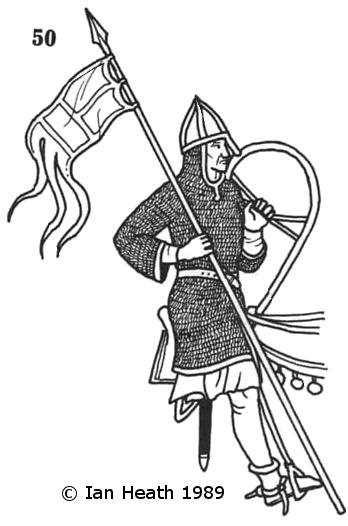
Create an Amazon Business Account

SCOTTISH KNIGHT, 12th CENTURY
An extract from Armies of Feudal Europe 1066-1300by Ian Heath


50. SCOTTISH KNIGHT, 12th CENTURY
As early as the end of the 11th century many disaffected Anglo-Norman knights had begun to take service with the Scottish crown, as result of which Norman-style equipment was soon adopted by the royal family and those Scots closely associated with the king's household. The particular figure depicted here, taken from the seal of King Alexander I (1107-24) demonstrates this more eloquently than could any number of words; with his kite-shield, nasal helmet, hauberk and gonfanon he is indistinguishable from his southern counterparts. However, it took considerably longer for such equipment to be adopted in the north, where the old tradition of going into battle lightly-armed was only slowly abandoned: Aelred of Rivaulx reports that at the Battle of the Standard in 1138 even an important chieftain like Earl Malise of Strathearne could proudly boast that, though he wore no armour, yet he would advance further than the king's mailed 'Frenchmen'. Nevertheless, the evolution of Scottish armour basically kept pace with that of England, and by the mid-13th century Matthew Paris could speak of Scots knights mounted on horses barded in steel or linen, even though the mounts themselves were not always Spanish, Italian 'or other costly horses'.
[Based on Seal of Alexander I of Scotland, 12th Century]